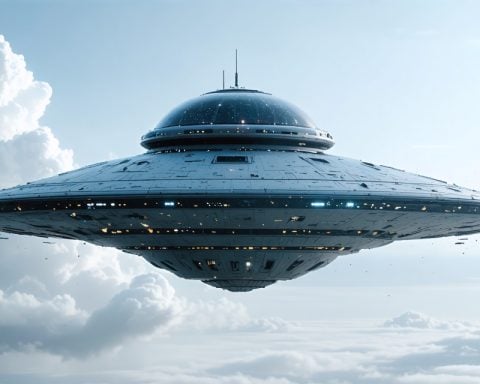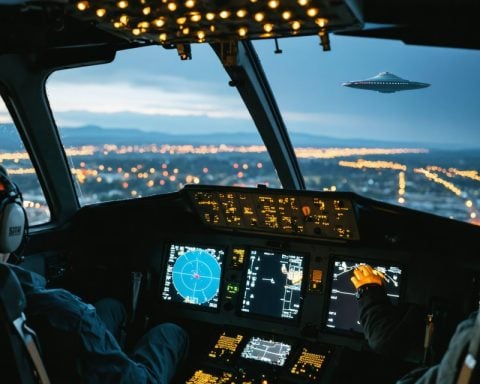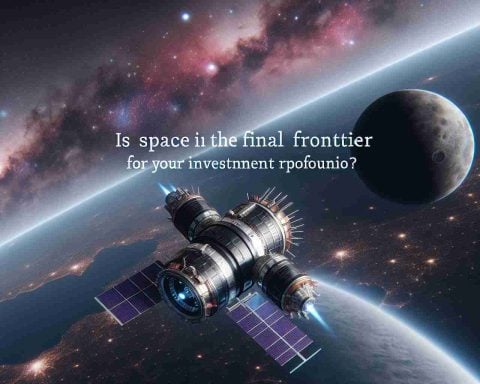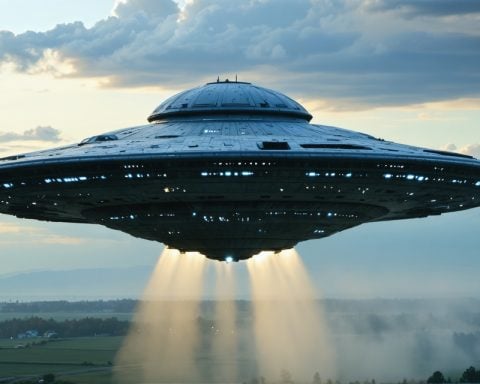- The James Webb Space Telescope is undertaking a crucial mission to study asteroid 2024 YR4, which has a potential Earth impact risk in December 2032.
- The asteroid is estimated to be around 180 feet, with the capability of causing regional damage similar to the 1908 Tunguska event.
- Webb will use its advanced infrared capabilities to accurately measure the asteroid’s size and surface properties, distinguishing these from mere reflected sunlight estimates.
- The telescope’s observational window starts in March 2024, targeting the asteroid’s peak brightness, and extends to May, as 2024 YR4 moves away from the Sun.
- This mission highlights the importance of scientific exploration in mitigating potential space threats, underscoring the power of knowledge in cosmic risk management.
An extraordinary cosmic drama unfolds as the James Webb Space Telescope embarks on a mission to decode the mysteries of 2024 YR4, an asteroid that poses a tantalizing yet terrifying puzzle for astronomers. Hidden in the inky vastness of space, this potential Earth-botherer has been marked with a slim yet undeniable possibility of impact in December 2032. Its size, currently dancing around estimates of 180 feet, drags with it the weighty possibility of creating disastrous consequences on a regional scale, akin to the infamous Tunguska event of 1908.
This urgent celestial investigation grants the James Webb Space Telescope—a marvel of scientific ambition—a pivotal role. Unlike its predecessors stranded under our murky atmosphere, Webb promises to unveil the asteroid’s true dimensions. By sensing the heat radiating from 2024 YR4, Webb will go beyond the misleading gleam of reflected sunlight, carving through the uncertainties like a cosmic scalpel, pinpointing the asteroid’s real size and surface properties.
Set to begin in March, Webb’s infrared eyes will scrutinize the asteroid at its utmost brightness and, by May, catch a fleeting glimpse as YR4 sweeps across the solar stage, inching away from the Sun’s spotlight. This compact observational window will utilize precious, competitively allocated hours from the telescope’s schedule, spotlighting the urgency woven into this celestial game of detection.
Amidst the awe-inspiring expanse of space, Webb’s quest underscores a profound truth—knowledge empowers humanity to face the daunting prospects of cosmic roulette. As we continue to peer beyond our celestial veil, each discovery threads a narrative of survival, passion, and the eternal dance with the stars.
The Astounding Mission of the James Webb Space Telescope: Unraveling the Mysteries of Asteroid 2024 YR4
How-To Steps & Life Hacks for Tracking Near-Earth Objects (NEOs)
1. Understand Detection Methods: NEOs are identified using ground-based and space telescopes. The James Webb Space Telescope (JWST) leverages infrared capabilities to detect asteroids that reflect minimal sunlight.
2. Using Telescopic Tools: Amateur astronomers can contribute to asteroid observation using telescopes equipped with CCD cameras and suitable software for tracking celestial objects.
3. Stay Updated with Databases: Regularly check databases like NASA’s Near-Earth Object Observations Program for updates on potential threats and their trajectories.
4. Participate in Citizen Science Projects: Join initiatives like NASA’s “Asteroid Watch” to aid professionals in tracking and analyzing asteroids.
Real-World Use Cases
The Webb Telescope’s mission to study 2024 YR4 illustrates the critical role of advanced technology in planetary defense. By accurately determining the asteroid’s size and trajectory, agencies can better assess impact risks and prepare timely deflection strategies.
Market Forecasts & Industry Trends
The space industry, focusing on planetary defense and asteroid mining, is projected to grow significantly. According to a report by Fortune Business Insights, the global space mining market is expected to gain traction as technology evolves.
Reviews & Comparisons
James Webb Space Telescope vs. Hubble Telescope:
– JWST: Equipped with advanced infrared sensors, JWST can see through cosmic dust and observe cooler objects like 2024 YR4.
– Hubble: Primarily visible light and limited infrared capability, best for viewing bright, distant galaxies.
Controversies & Limitations
While the JWST offers unprecedented capabilities, its observation schedule is crowded, making the study of each target highly competitive. Furthermore, its findings rely on collaborative validation from ground-based observatories.
Features, Specs & Pricing
James Webb Space Telescope:
– Launch Date: December 25, 2021
– Primary Mirror Diameter: 6.5 meters
– Instruments: Infrared spectrographs, camera, and chronographs
– Mission Cost: Approximately $10 billion
Security & Sustainability
NASA continues to monitor NEOs and develop strategies to mitigate potential impacts. The Joint NASA/ESA Asteroid Impact & Deflection Assessment (AIDA) mission aims to develop asteroid deflection techniques.
Insights & Predictions
Experts predict that with advancements in AI and machine learning, future telescopic missions will process and analyze data more quickly, enhancing our ability to predict and mitigate asteroid threats.
Tutorials & Compatibility
Future tutorials will focus on integrating AI with telescopic data to automate tracking processes, allowing for faster and more accurate asteroid assessment.
Pros & Cons Overview
Pros:
– Precise observation of asteroids
– Enhanced ability to predict and mitigate impacts
– Supports scientific research and planetary defense
Cons:
– High operational costs
– Limited observational time due to high demand
– Dependent on collaboration with ground-based observatories for validation
Actionable Recommendations
– For Amateur Astronomers: Use online resources and databases to flag and contribute data on suspicious NEOs.
– For Space Enthusiasts: Engage with citizen science projects to help track and study asteroids.
In conclusion, while the mission to analyze 2024 YR4 using the James Webb Space Telescope underscores the importance of advanced space technology, it also highlights the necessity of collaborative efforts between amateur astronomers, professionals, and high-tech instruments. This cooperative ecosystem is crucial for ensuring enhanced planetary security against potential cosmic threats.



















